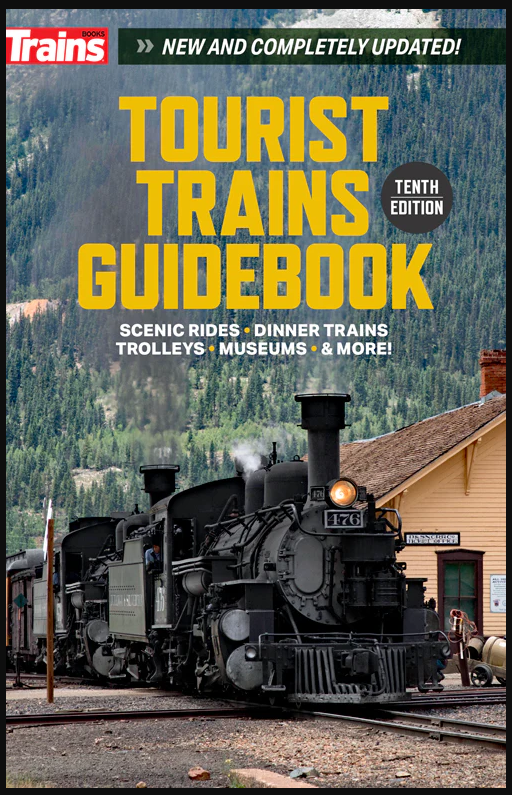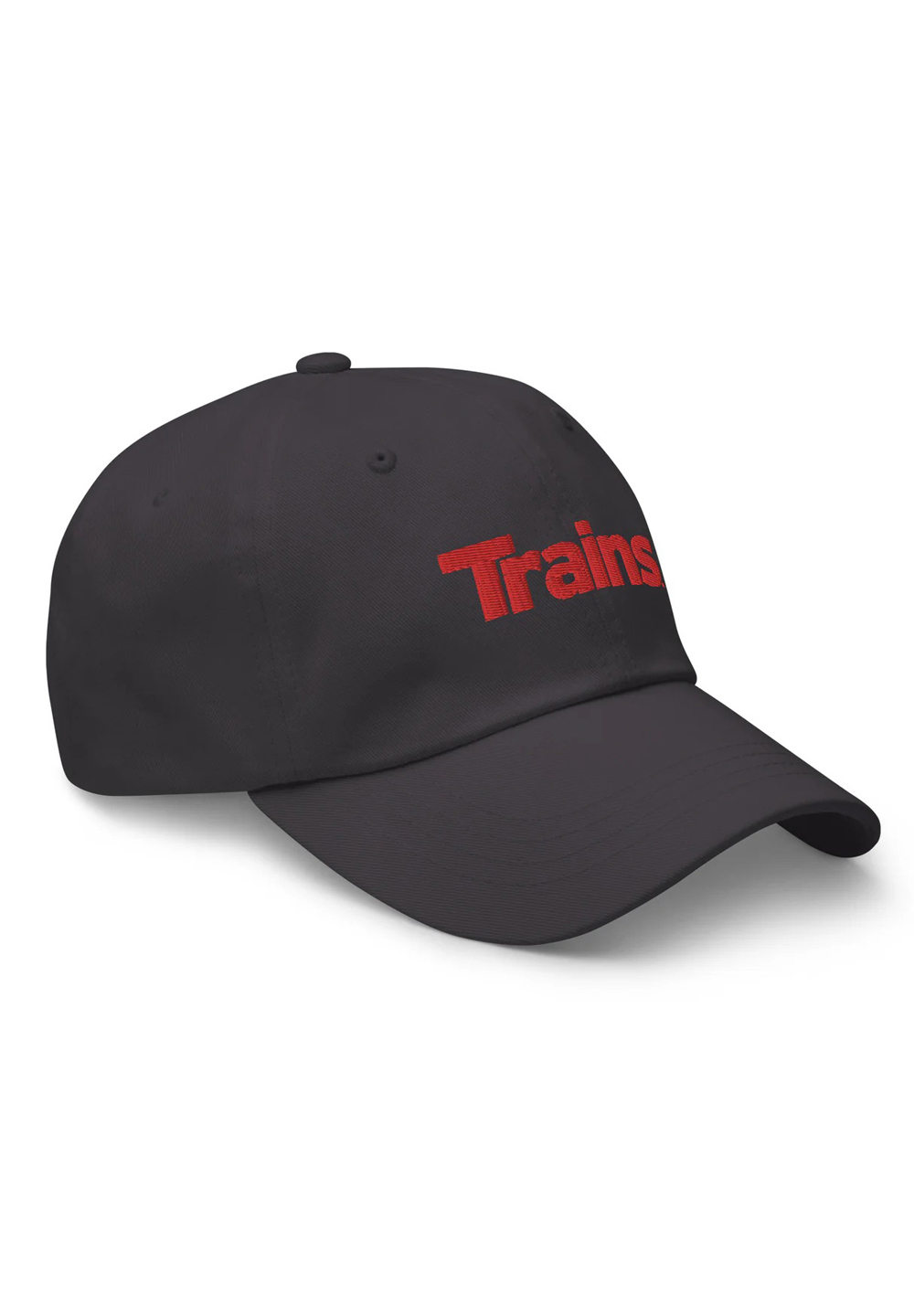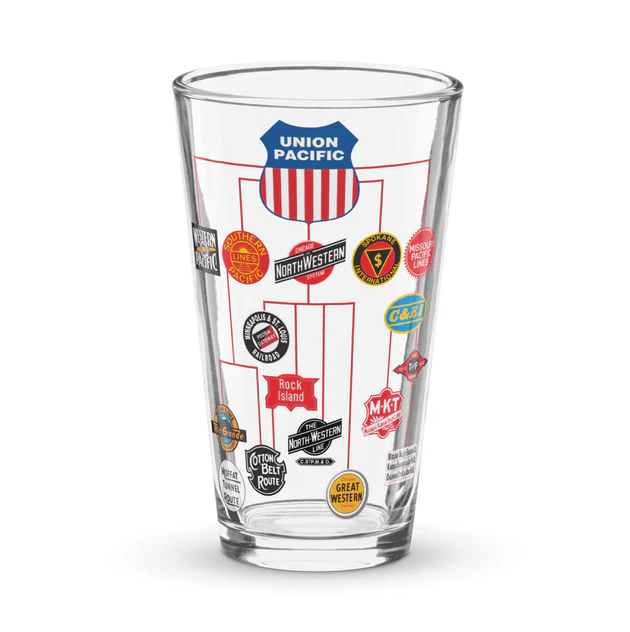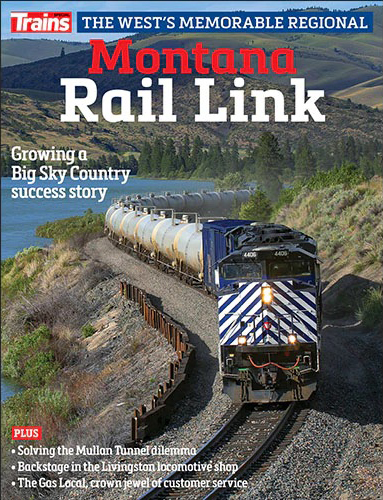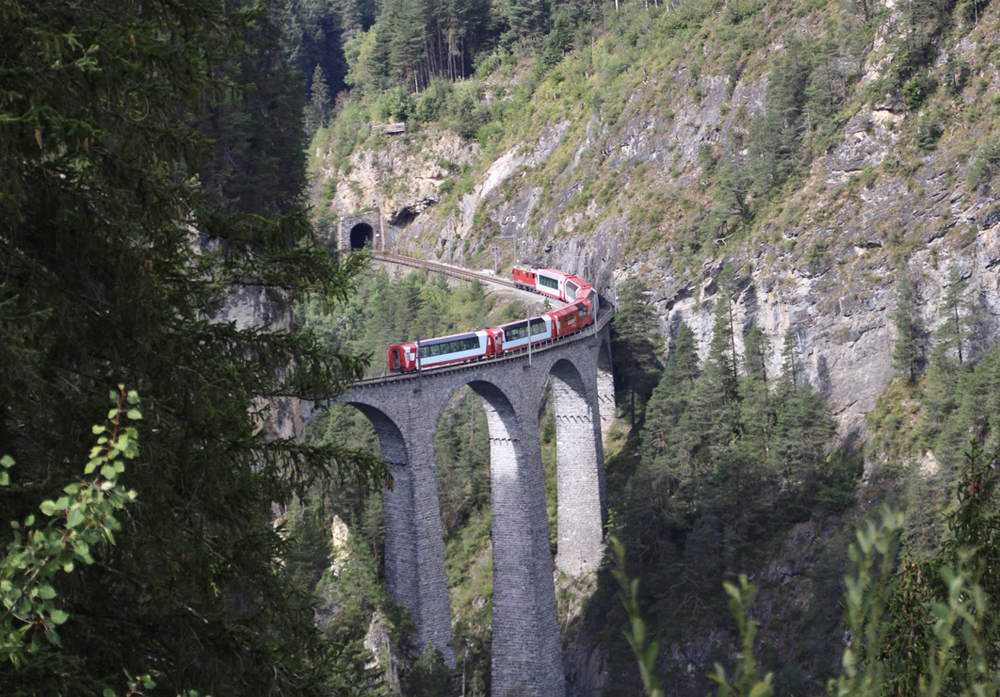
Note: General travel information on visiting the Rhätishe Bahn is available here.
North American railfans can only dream of their interests receiving the kind of respect from a major railroad that is displayed by the Rhätische Bahn, the meter-gauge, electrified railway in the Swiss canton of Graubünden we are featuring in the June and July 2025 issues of Trains Magazine.
If the articles inspire you to visit, you’ll want to check out the information in our “If You Go” article on Trains.com. You’ll also want to be aware of a number of rail-enthusiast offerings that mostly aren’t mentioned in the magazine.
Some useful information:
Website
As a starting point for exploring the railroad, the RhB has an amazingly comprehensive website; illustrating Switzerland’s multilingual nature, and the railroad’s wide-ranging appeal, it includes material in 10 languages, although German is predominant.
That website includes a section specifically for railfans, including schedules for freight trains, a link to the railroad’s own webcams, and information on locomotive assignments. Modelers can even purchase plans for stations and bridges.
The website also includes information on most everything else we’re going to cover; we’ll provide the links as we go along.
Heritage train

Certainly, it’s not that unusual for railroads to offer trips with historic equipment, though such excursions are all but gone from Class I railroads in North America. But the RhB runs one daily from May to October. The round trip between Davos and Filisur, about 40 minutes each way, features outstanding scenery, including a brief and spectacular view of the RhB’s most famous feature, the Landwasser Viaduct that sees trains on a tall, curving stone bridge that leads immediately into a tunnel. Some good luck here: when I rode the train, I happened to be in position to catch the view that leads this article of a regular train on the viaduct far below.
This train features 1920s-era first- and second-class cars as well as open-air cars. It usually also features the 1920s electric locomotives known as “Crocodiles,” but both of those locomotives were sidelined for servicing during my visit. Instead, it featured the oldest of the Ge 4/4 locomotives that are the current backbone of the locomotive fleet.

Because this train can, at least theoretically, be used as transportation as well as an excursion, it requires only a regular second-class ticket — and is covered if you’re traveling on a Swiss Travel pass. No reservations are necessary (or, in fact, even possible) except for groups. Definitely worth including in your travel plans; more information is available here.
Landwasser Express and Shuttle
Since we’ve already touched on the Landwasser Viaduct, it’s worth noting the RhB and the region around the viaduct are working to develop more tourism around this area. They’re promoting it as “Landwasser World,” with five “adventure worlds.” One of these is the “Railway Adventure World,” which includes the heritage train we’ve just covered; the Landwasser Express, a tram that can take you from the Filisur station to the base of the viaduct; and — new in 2025 — the Landwasser Shuttle, which will run between Filisur and Alvaneu, with a stop at a new Landwasser Viaduct station. The schedule calls for 14 trips a day with a short train that will feature a special paint scheme featuring the viaduct, including open-air coaches that were still being prepared during my 2024 visit. Tickets are quite inexpensive; the Swiss Travel Pass and other railpasses will also be accepted. The tram and shuttle are both May-October operations.
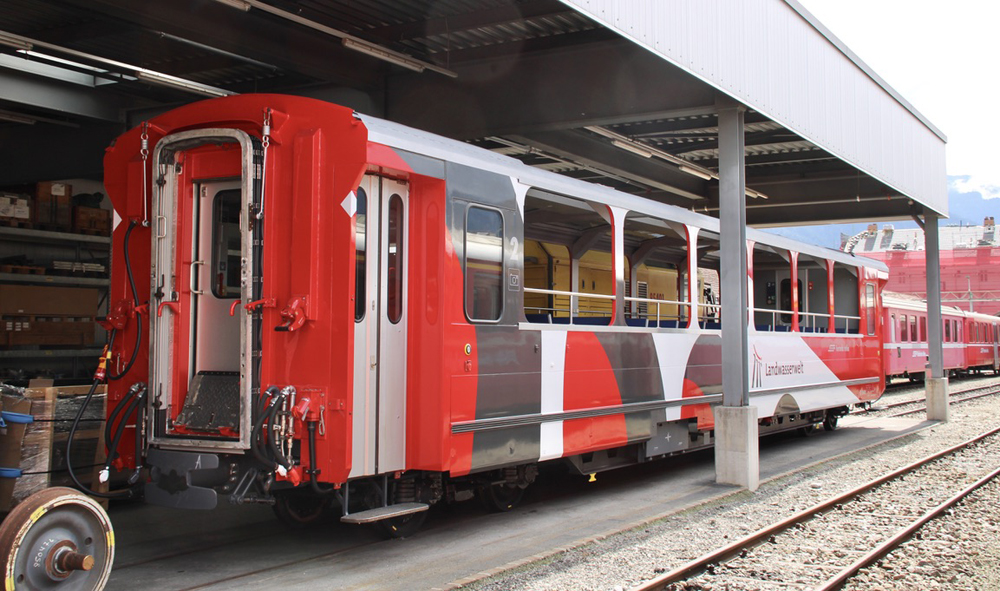
There are also two museums of note for railfans, one included in the “Landwasser World” and one that isn’t. Included is the Bergün Local Museum and Model Railway, which includes a scale model version of the RhB between Bergün and Preda, which includes a helical tunnel and some other spectacular engineering. Also in Bergün is the Albula Railway Museum. Immediately adjacent to the Bergün station, it has some preserved equipment and four floors of exhibits.
Historic-equipment excursions
The RhB has an extensive collection of operable heritage equipment. After not running any steam excursions in 2024 because of a engineer shortage, the railroad plans several trips in 2025, featuring one of its two operable 2-8-0s, as well as a 2-6-0T known as “Heidi” because of its appearance in the movie of the same name. Not running this year, but expected to return in 2026, is the world’s only self-propelled steam rotary. (You’ll be reading more about it soon).
There are also once-a-month “Flying Rhaetian” trips between May and August with vintage electric equipment on the Albula Line, and six trips in July and August with the luxury Alpine Classic Pullman train between Davos and St. Moritz. Information on all of those is available here.
Occasional heritage trips also run on the Bernina Line — which has a distinctly different equipment history because it was once a separate railway, and to this day has a different electrical system. These are not currently listed on the website, which may indicate 2025 schedules have not been set at this writing.
One other heritage experience I would have liked to try,, but it didn’t fit my schedule: the “Gourmino” dining car on the Chur-St. Moritz route. RhB trains generally don’t include dining cars, but most of the year, one round trip a day includes this vintage car featuring gourmet meals. If the menu online is any indication, you would eat quite well.
Cab rides
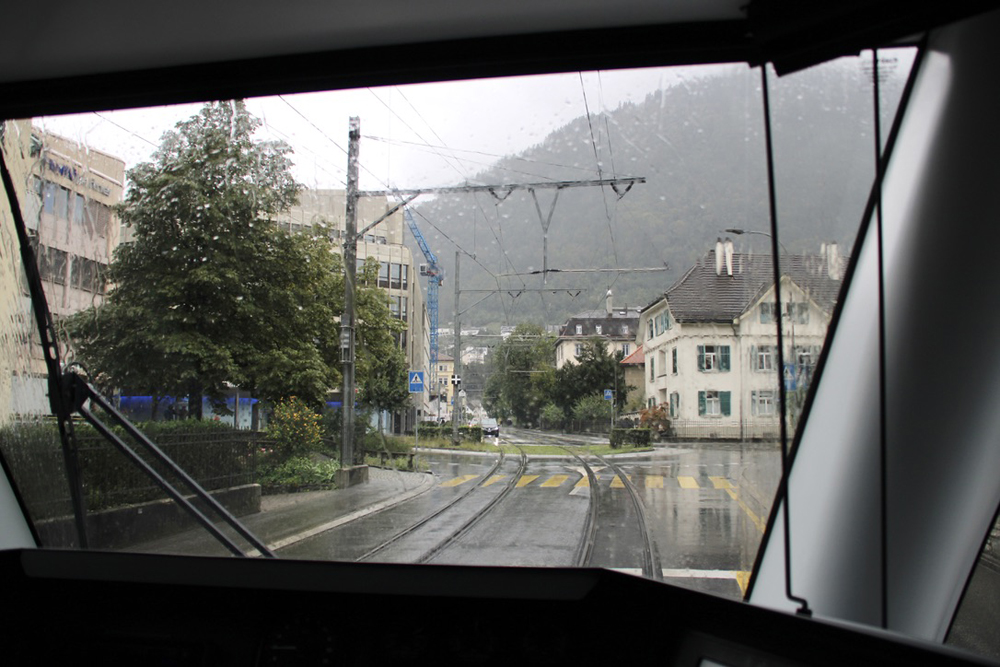
Finally, there’s the exclusive (and expensive) opportunity to purchase cab rides. This is available on one passenger trip per day in each direction on the Albula Line between Chur and St. Moritz, and the Bernina Line between St. Moritz and Tirano, Italy (cost is 850 Swiss Francs, $964 at this writing). It’s also available Monday through Friday on a freight train between Landquart and Samedan for 900 Swiss Francs ($1,020); that includes a first-class passenger return ticket. In both cases, you’ll be accompanied by an experienced RhB employee, since the engineer (or driver, in the British parlance used by the RhB) can’t be distracted by questions. More information is available here.
Worth noting: In theory, it’s possible to get an experience very close to a cab ride on almost any train with the new Capricorn trainsets or . They are built with a window into the seating area immediate behind the cab, so it never hurts to try to get into that first car (you’ll need a first-class ticket). Unfortunately but understandably, many of the drivers aren’t particularly comfortable being watched while they work, so most close that window’s curtain. Only twice in more than a week of extensive travel on the RhB did I encounter drivers who kept the curtain open; both times it was spectacular. Here’s some video looking through that window on the Albula Line.
Also on Trains.com: A two-part visit to the RhB’s main shops in Landquart, available here and here.






